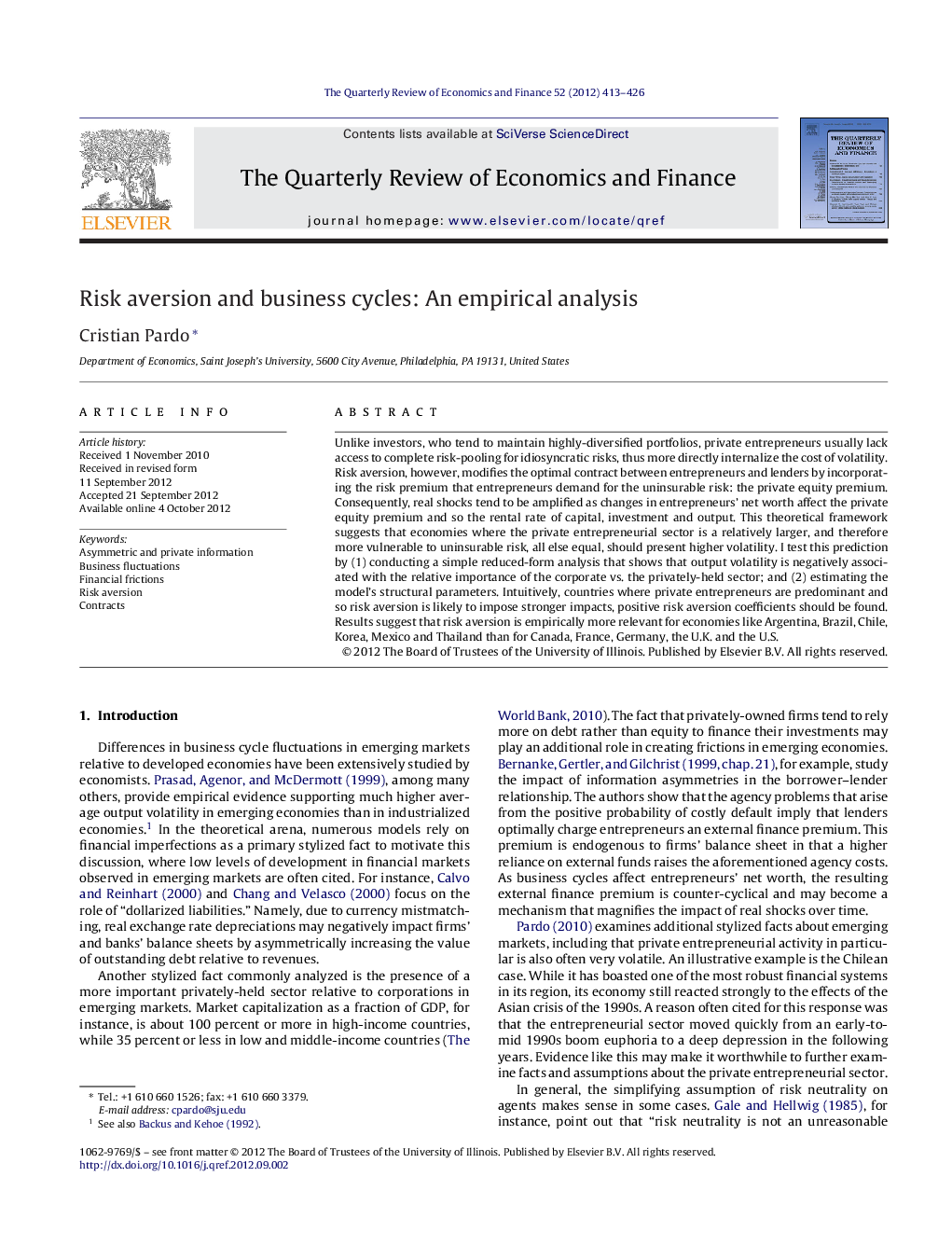| Article ID | Journal | Published Year | Pages | File Type |
|---|---|---|---|---|
| 982221 | The Quarterly Review of Economics and Finance | 2012 | 14 Pages |
Unlike investors, who tend to maintain highly-diversified portfolios, private entrepreneurs usually lack access to complete risk-pooling for idiosyncratic risks, thus more directly internalize the cost of volatility. Risk aversion, however, modifies the optimal contract between entrepreneurs and lenders by incorporating the risk premium that entrepreneurs demand for the uninsurable risk: the private equity premium. Consequently, real shocks tend to be amplified as changes in entrepreneurs’ net worth affect the private equity premium and so the rental rate of capital, investment and output. This theoretical framework suggests that economies where the private entrepreneurial sector is a relatively larger, and therefore more vulnerable to uninsurable risk, all else equal, should present higher volatility. I test this prediction by (1) conducting a simple reduced-form analysis that shows that output volatility is negatively associated with the relative importance of the corporate vs. the privately-held sector; and (2) estimating the model's structural parameters. Intuitively, countries where private entrepreneurs are predominant and so risk aversion is likely to impose stronger impacts, positive risk aversion coefficients should be found. Results suggest that risk aversion is empirically more relevant for economies like Argentina, Brazil, Chile, Korea, Mexico and Thailand than for Canada, France, Germany, the U.K. and the U.S.
